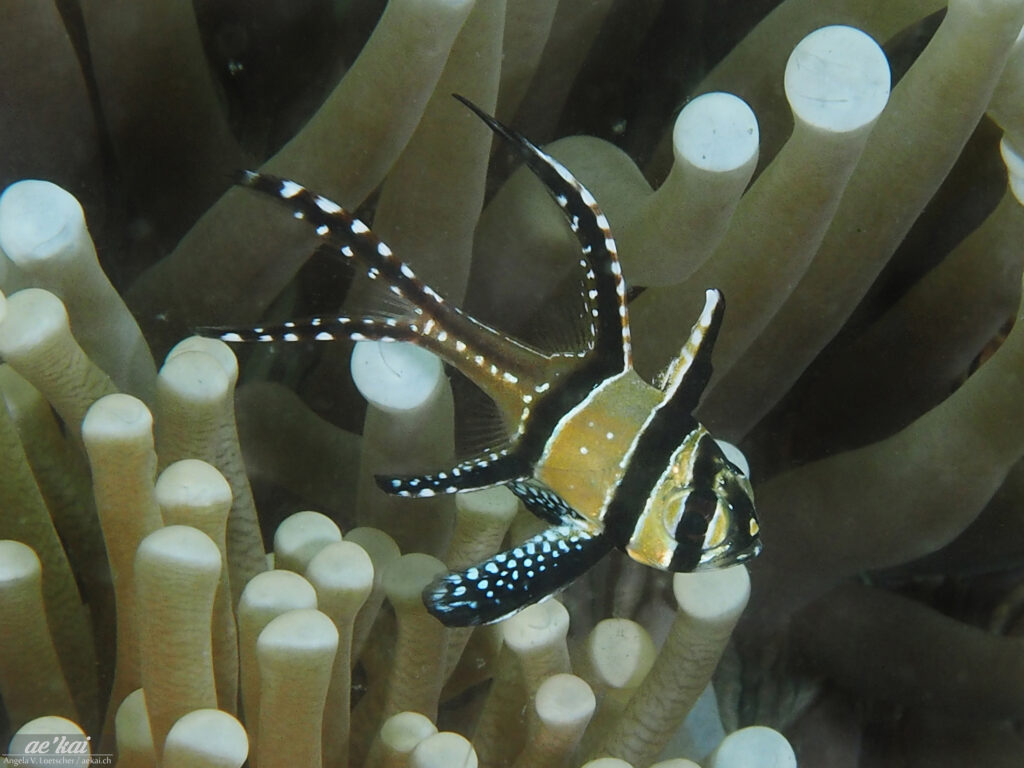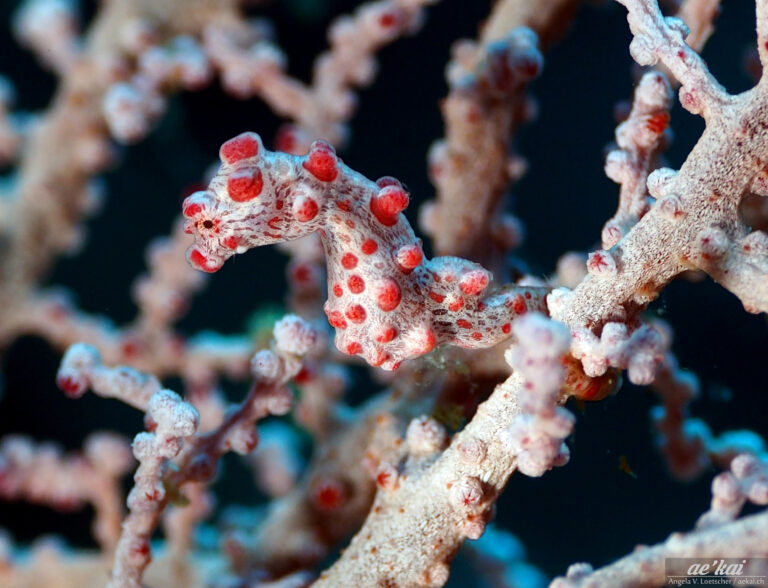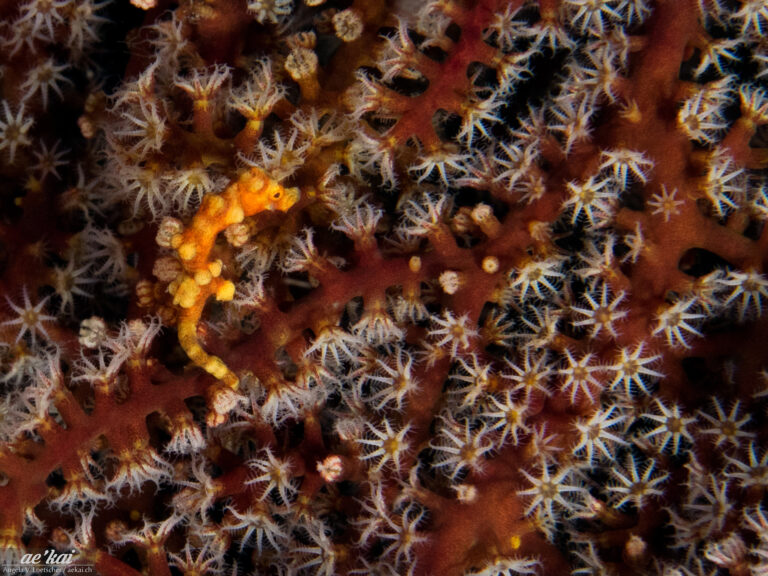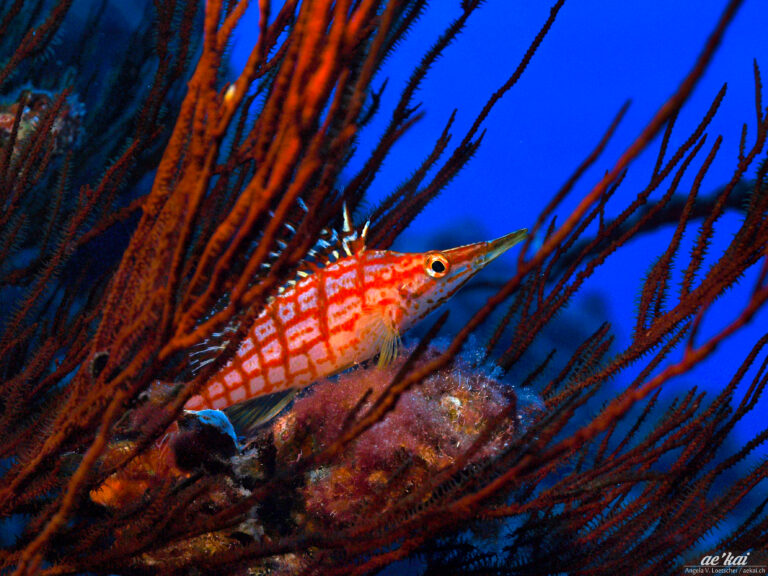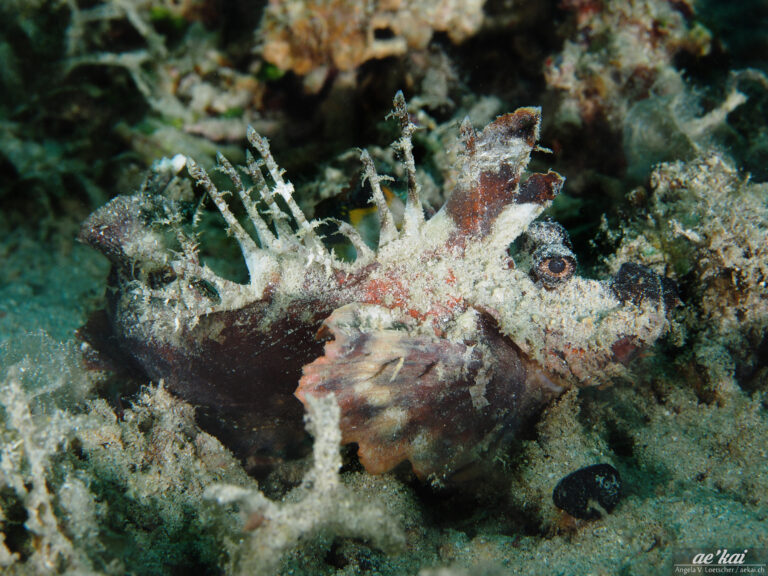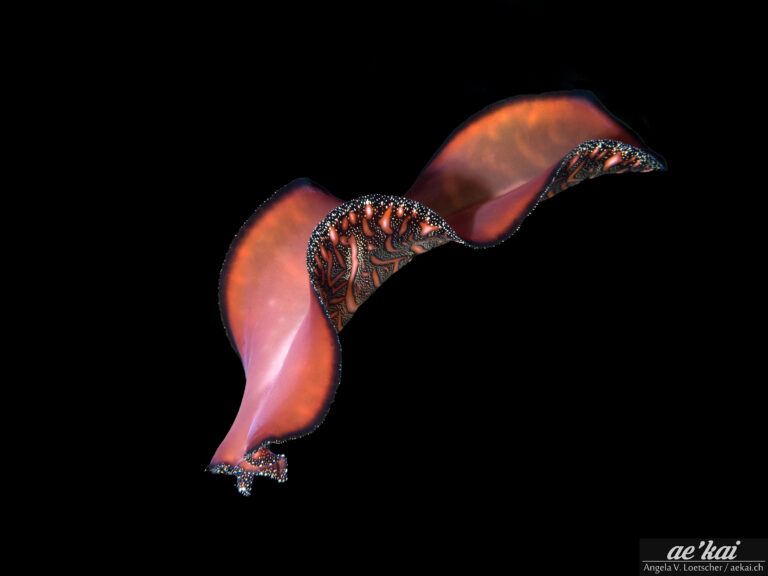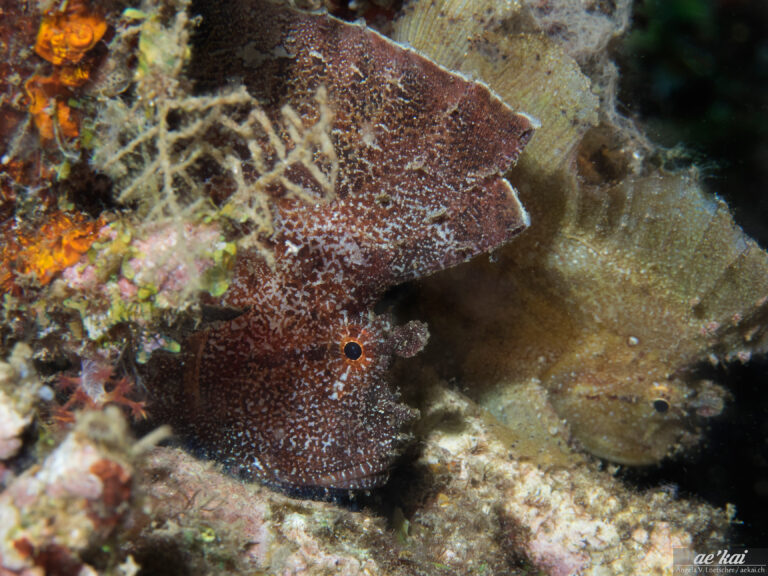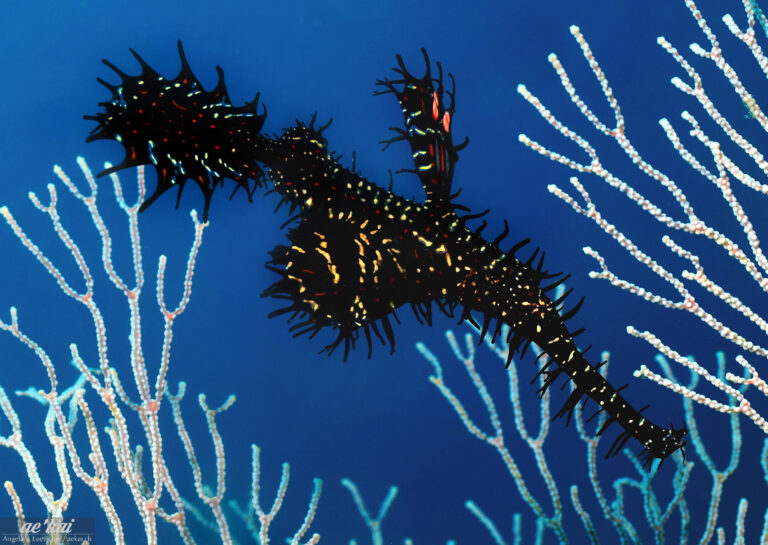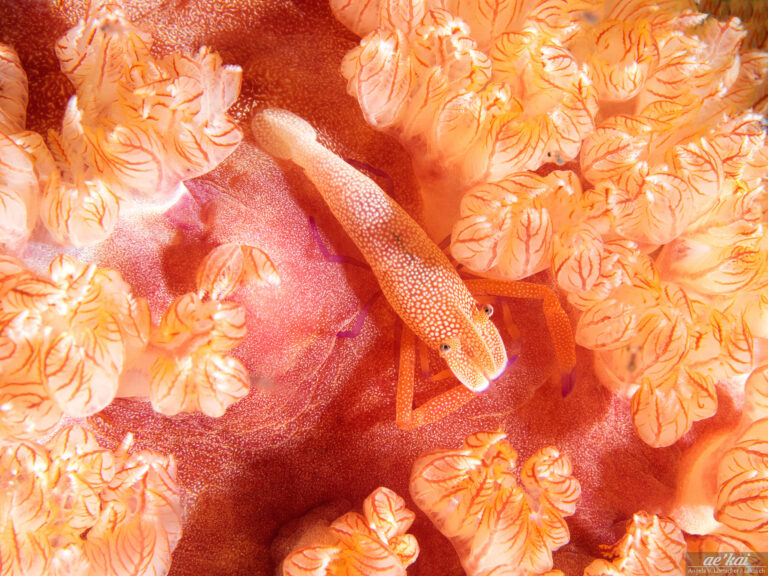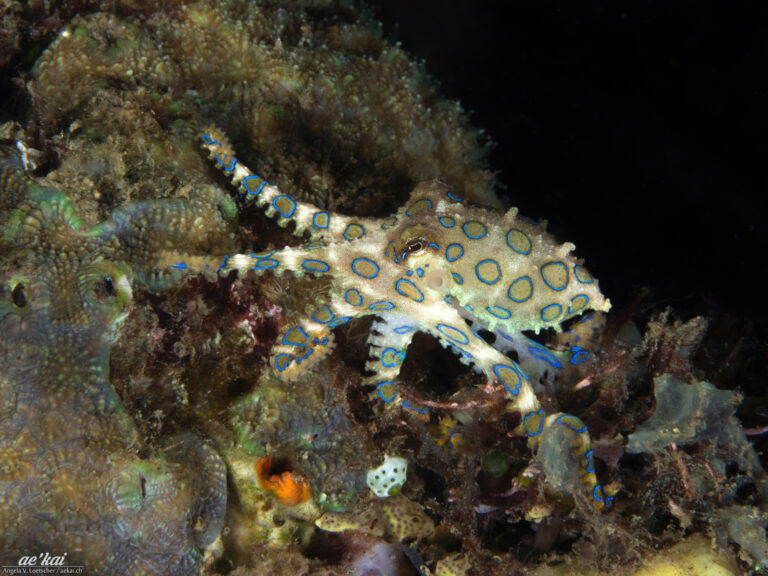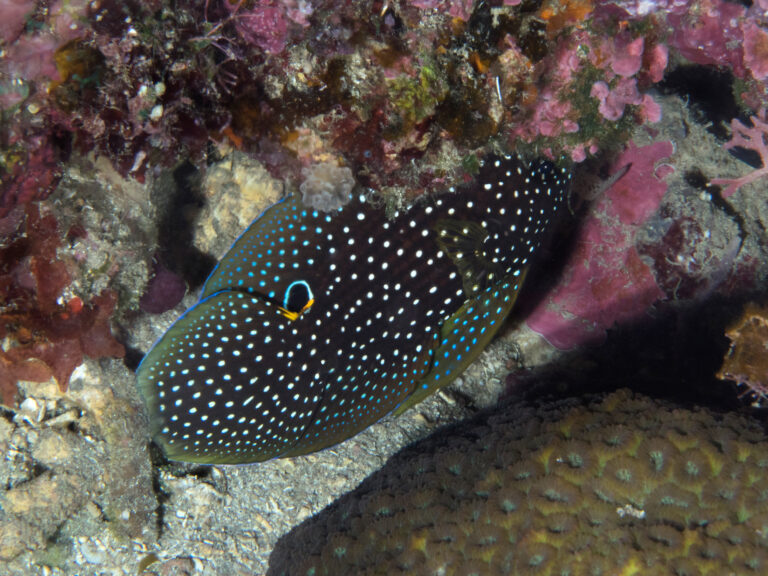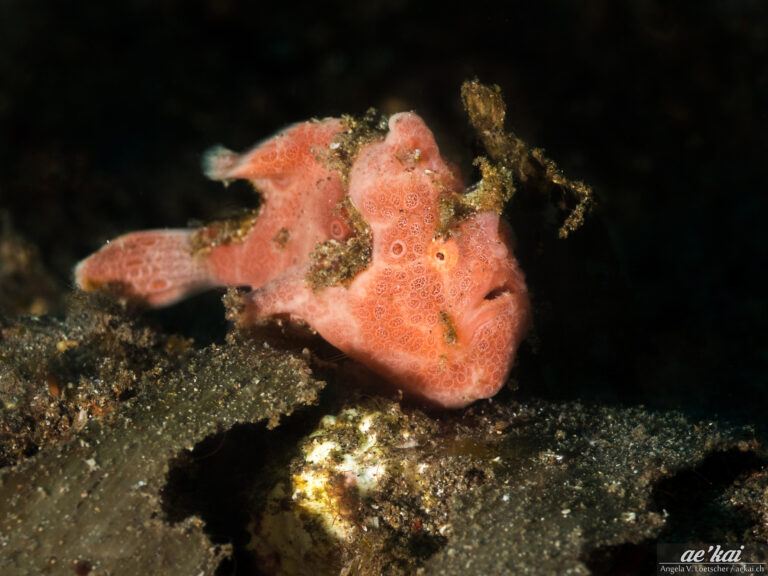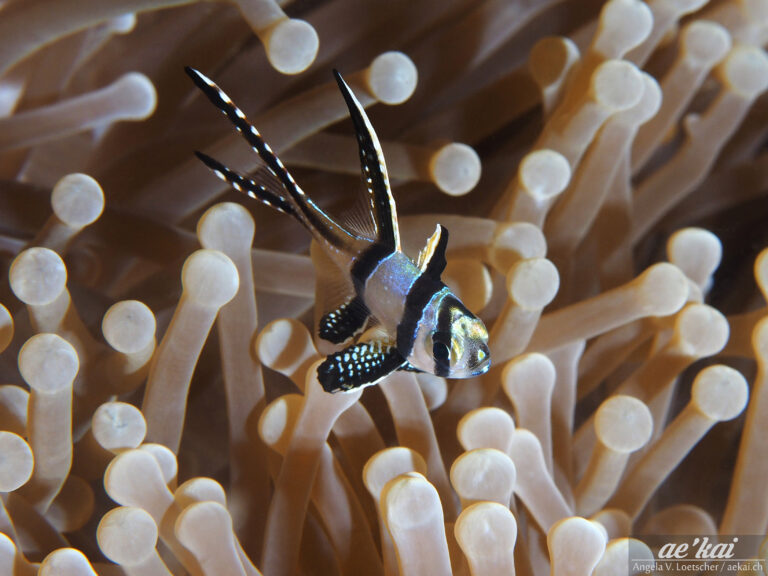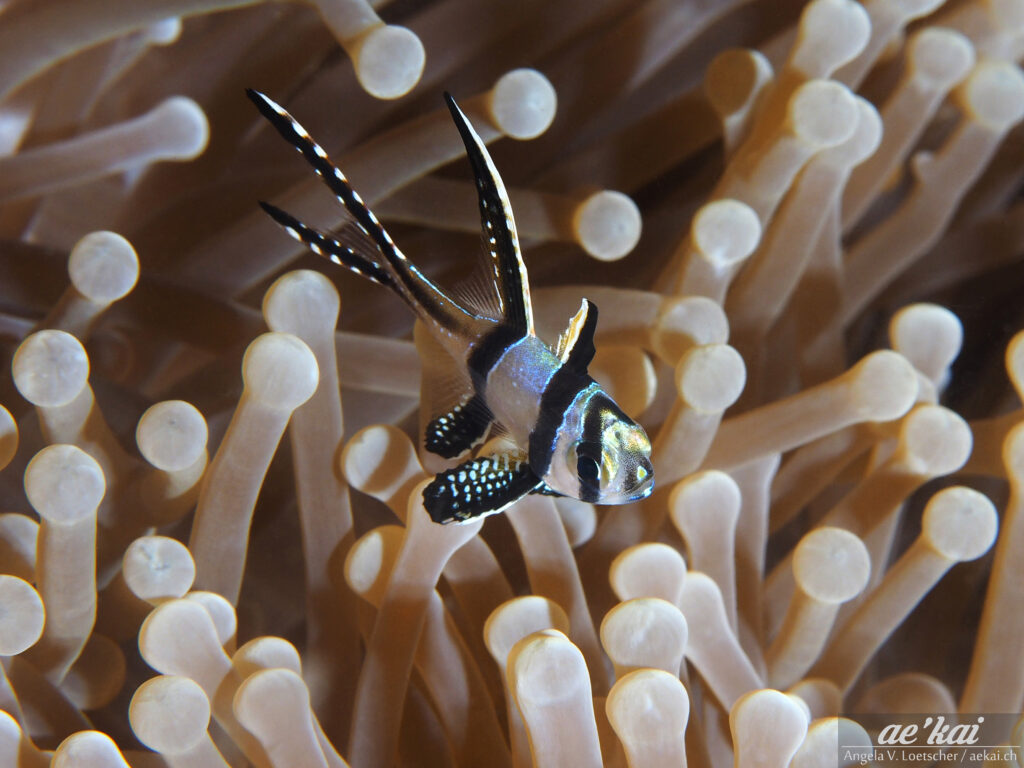
EN: Banggai Cardinalfish
DE: Banggai-Kardinalbarsch | Molukken-Kardinalbarsch
Family
Cardinalfishes
(Apogonidae)
Size
max. 8 cm
Diet
Crustaccean in
Plankton Phase
Distribution
Banggai Islands
Indonesia
The Banggai Cardinalfish (Pterapogon kauderni), also called Moluccan Cardinalfish, is a very nicely marked cardinalfish with elegant long fins.
The Banggai Cardinalfish is an endemic species, which means that it occurs in a very limited area of the world. In the case of the Banggai Cardinalfish it is a very small area, only around the Banggai Islands, east of the big Indonesian island Sulawesi. Nowadays, it can also be found in the Lembeh Strait in North Sulawesi, where it was introduced by a dive guide as an attraction for diving tourists. After also the aquarium industry has found interest in this attractive fish, it was entered on the IUCN Red List of Threatened Species in 2007 and classified as “endangered”. The aquarium industry has caused a lot of damage to this fish and by 2004 the entire population around Limbo Island was completely fished out.
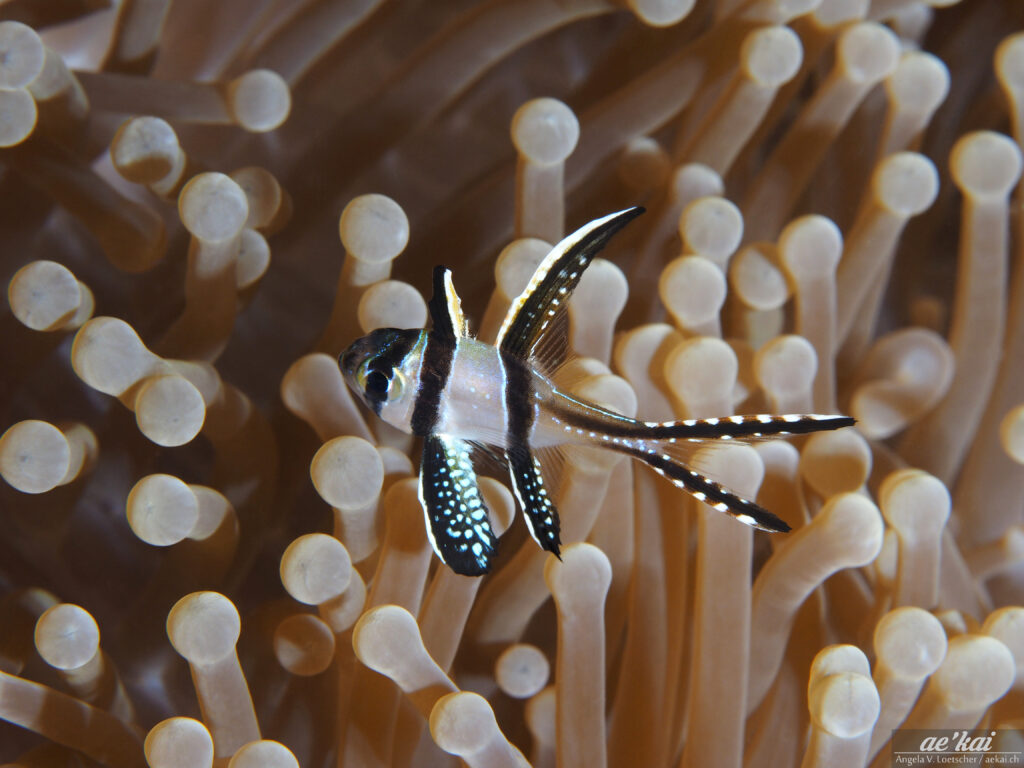
The shiny, silver body has three prominent, broad vertical stripes, one on the head and two on the flanks, which also extend into the fins. A narrower stripe extends vertically over the face at the front and should camouflage the very large eyes. The areas between the stripes are covered with bright white dots, which, similar to a fingerprint, form a pattern that is different for each individual. The front dorsal fin is fringed, the second dorsal fin and the caudal fins are smooth and elongated. All fins have black bands and except the front dorsal fin, also the white spots. While Banggai Cardinalfish live in a depth of 0.5 – 16 m, they are usually more likely to be found between 1-3 m depth. Banggai Cardinalfish grow up to 8 cm and are said to have a natural life span of two years. They usually live in small groups of 1-6 animals, however, a population of 500 animals has been sighted.
Its predators include crocodile fish, scorpion fish, groupers and morays. Banggai Cardinalfish move constantly in rather smooth, quiet movements and are never quite still, but they are also not shy. This delights underwater photographers and Ribbon Eels (Rhinomuraena quaesita also called Ghost Morays) equally. Somehow, Banggai Cardinalfish either don’t seem to be very smart, have poor vision or too much self-confidence, because when Ribbon Eels live next to an anemone, all they have to do is stick their head out, wait a moment and then simply pick one Banggai Cardinalfish after the other and eat them. Unbelievably, this works even after a few fish have been eaten up. The other fish somehow don’t get any smarter and poof… another one is gone.
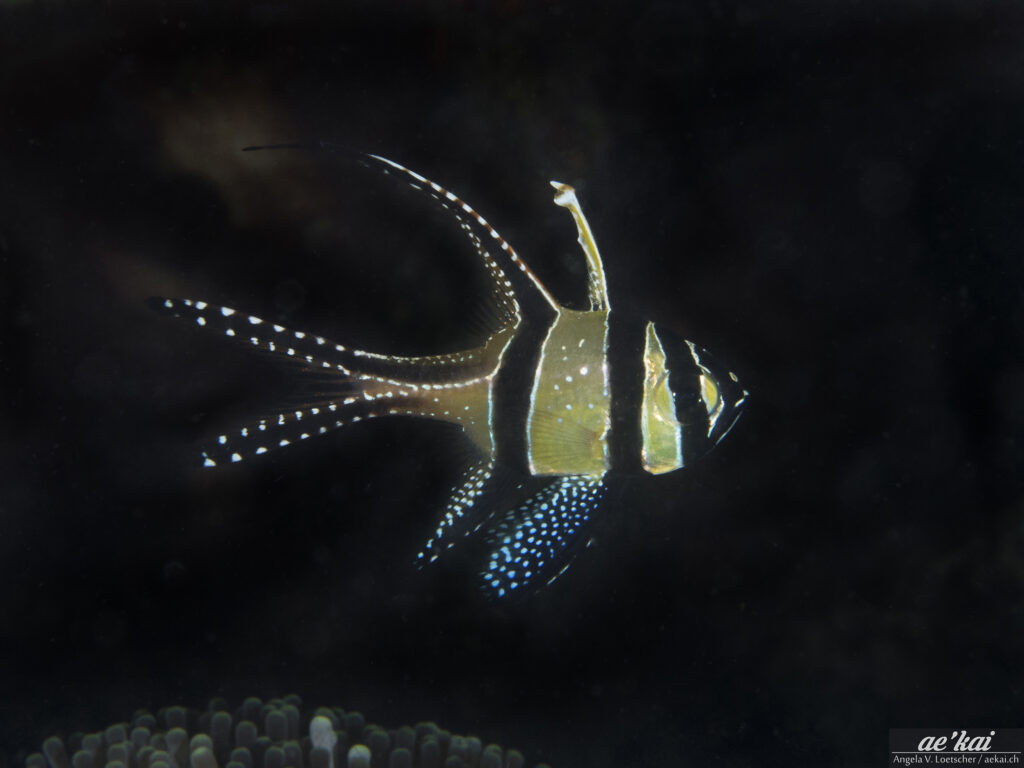
The Banggai Cardinalfish feeds mainly on tiny crustaceans in the plankton stage, but is also an opportunistic eater, grabbing a variety of very small organisms in the water or on the sea floor, including sea worms, molluscs and fish larvae. It plays a very important role in its environment for the health of fish in general, as it eats parasites in the larval stage and thus reduces their numbers.
But what makes the Banggai Cardinalfish among marine fishes especially remarkable is something invisible: the incredibly extreme genetic diversity within even very small populations. Populations that are only 5 km away from each other are genetically so different that they could almost count as a completely different species. This is due to their very limited possibilities of distribution (dispersion), because the islands are separated by deep channels and strong currents. This makes interaction between the populations impossible.
Reproduction
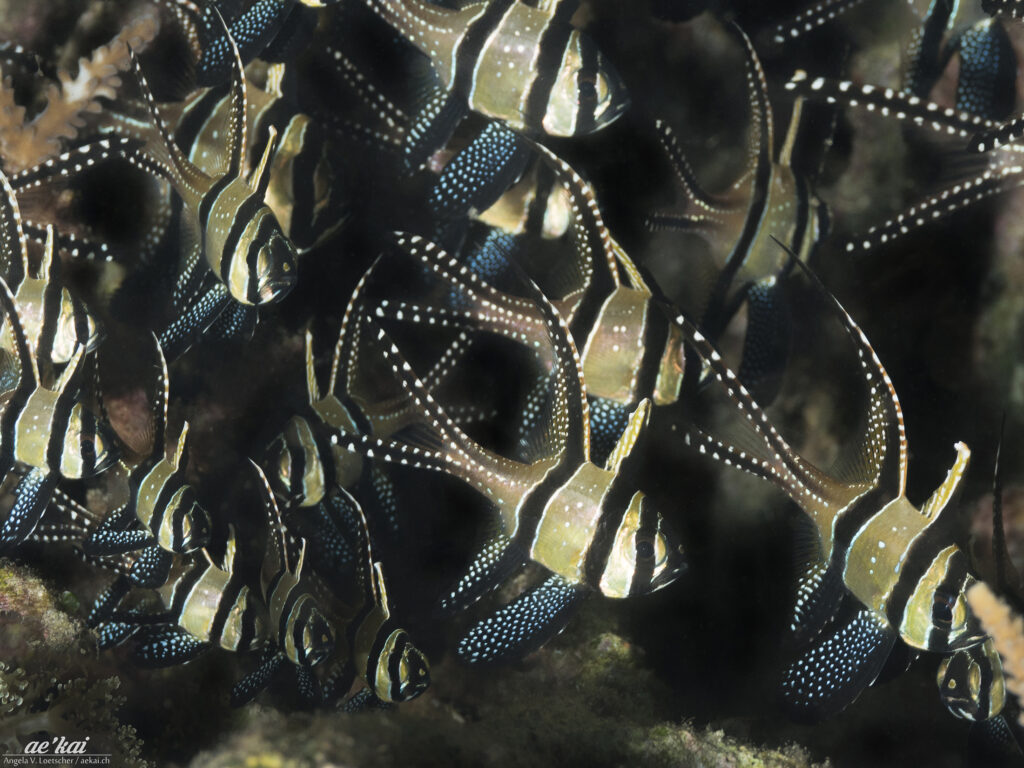
Reproduction begins with the choice of a male by a female. The pair then separates from the group and establishes itself in an own territory, which they defend extremely aggressively against other fish. The female initiates the unusual mating ritual by swimming side by side with the male, with close body contact, and with trembling movements. This behavior is repeatedly performed by both parties. The male can be distinguished only by the somewhat darker jaw and occasional opening of the mouth. After several hours (!) of this behavior, the female spawns an egg-mass of up to 75 relatively big eggs. These are immediately swallowed by the male and hatched in a special side pocket in the oral cavity. Fish that handle the incubation of their offspring in this way are called mouth brooders.
After about 20 days the embryos hatch and continue to develop in the side pocket. Another 10 days and the young have reached a size of about 5-6 mm and are ready to be released into the big wide world. The male goes to a long spiny sea urchin or an anemone, which offer protection from predators to the hatchlings. During the whole breeding phase, i.e. for 30 days, the male does not eat anything and instead is purely occupied with the care of the eggs. It turns the eggs regularly in order to create an optimal brooding basis and also pushes out damaged or unfertilized eggs.
Interference with nature
The introduction of the Banggai Cardinalfish to Lembeh was an extremely stupid move, because the influence on the local species was not predictable at all. In this case no disadvantage seems to have become known yet, but this does not mean that there is none. Especially in diving areas where there are still so many undescribed species and many of them are very small – so they are often overlooked – the side effect or damage can be just as easy to overlook or only be noticed when it is definitely too late. Many well-known examples show that the introduction of non-native species is rarely beneficial. In Hawaii, for example, introduced mongooses have wiped out native bird species instead of the unwanted rats. In Australia, various examples are known, best of all that of rabbits, which have multiplied explosively and caused much damage to agriculture.
Saltwater aquarium enthusiasts may call themselves fish lovers, but this is not an accurate description for someone who fills his aquarium with wild catch. For the number of fish that are available for successful sale, many of their fellow species die during transport to the store and again on the way to their new home. Many of them do not even live in the aquarium for very long, because the right food is sometimes simply not available in an aquarium and the fish’s needs cannot be met. But at the very least, if it is a fish that does not occur frequently in nature, it is unbelievably stupid to unnecessarily endanger the population by taking it out of its natural habitat to be kept in an aquarium. If you pay attention to the beautiful, endemic species and have already dived at different places in the world, you know how often you hear that you hardly get to see certain fish anymore, because they have fallen victim to the aquarium keeping. This is completely unacceptable and has nothing to do with love of animals.
